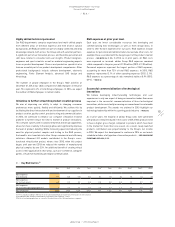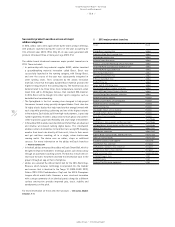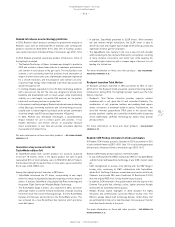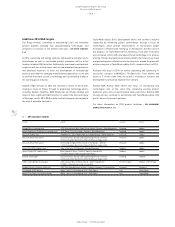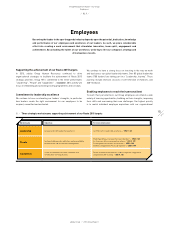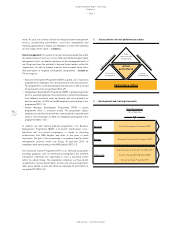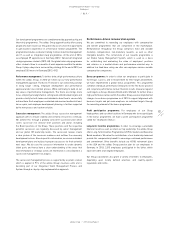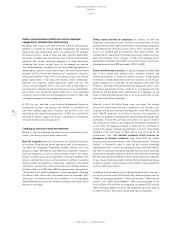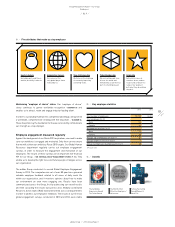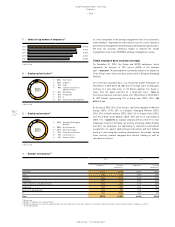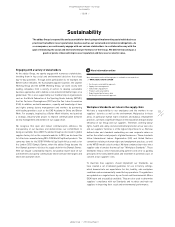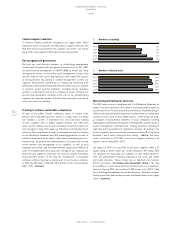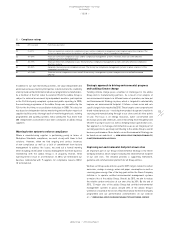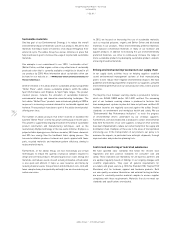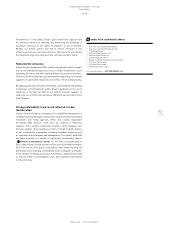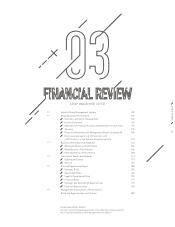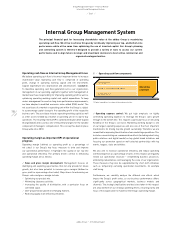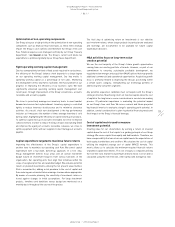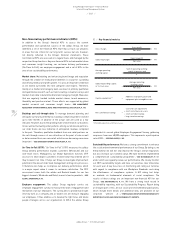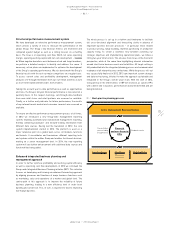Reebok 2013 Annual Report Download - page 115
Download and view the complete annual report
Please find page 115 of the 2013 Reebok annual report below. You can navigate through the pages in the report by either clicking on the pages listed below, or by using the keyword search tool below to find specific information within the annual report.
10
adidas Group
/
2013 Annual Report
Group Management Report – Our Group
111
2013
Sustainability
/
02.10
/
Sustainability
The adidas Group is responsible and accountable for developing and implementing sustainable business
practices that adhere to our operational needs as well as our social and environmental obligations. As
a consequence, we continuously engage with our various stakeholders in a collaborative way with the
goal of enhancing the social and environmental performance of the Group. We believe that acting as a
good corporate citizen will improve our reputation and hence our economic value.
Engaging with a variety of stakeholders
At the adidas Group, we openly engage with numerous stakeholders,
involving them in key social and environmental decisions that shape
day-to-day operations. Through active participation in, for example, the
Better Cotton Initiative, the Sustainable Apparel Coalition, the Leather
Working Group and the AFIRM Working Group, we work closely with
leading companies from a variety of sectors to develop sustainable
business approaches and to debate social and environmental topics on a
global level. This is also supported by our membership in organisations
such as the World Federation of the Sporting Goods Industry (WFSGI),
the Fair Factories Clearinghouse (FFC) and the Fair Labor Association
(FLA). In addition, we build awareness, capacity and knowledge of laws
and rights among factory management and workers by partnering
with leading providers such as the EHS Academy in China and Better
Work. For example, inspired by a Better Work initiative, we launched
a strategic, industry-wide project to improve communication between
factory management and workers in our supply chain.
We recognise that open and honest communication enhances the
transparency of our business and demonstrates our commitment to
being accountable. Since 2007, the adidas Group has disclosed its global
supplier factory list on the corporate website. In 2013, we disclosed the
list of factories manufacturing 2014 FIFA World Cup Brazil products. The
same was done for the 2010 FIFA World Cup South Africa as well as for
the London 2012 Olympic Games, when the adidas Group became the
first Olympic partner to disclose its supply chain for the Olympic Games.
With our regular sustainability reports, we publicly report back on our
achievements and openly communicate where we have met targets and
when we have fallen short.
More information online
More information on the following topics is available on our website at
:
//
W
WW.ADIDAS-GROUP.COM/EN
/
Our Group’s sustainability approach
/
Supply chain management
/
Stakeholder engagement
/
Products and sustainability
/
Reporting and performance data
/
Our Group’s environmental approach
Workplace Standards set rules in the supply chain
We have a responsibility to our employees and the workers in our
suppliers’ factories as well as the environment. Malpractice in these
areas, in particular human rights violations and dubious employment
practices, can have a significant impact on the reputation and operational
efficiency of our Group and our suppliers. Therefore, covering labour
rights, health and safety, and environmental protection at our own sites
and our suppliers’ factories is of the highest importance to us. We have
defined rules and standards embedding our own corporate values as
well as those that society expects of global businesses. These standards
follow International Labour Organization (ILO) and United Nations
conventions relating to human rights and employment practices, as well
as the WFSGI model code of conduct. We have condensed our rules into a
supplier code of conduct that we call our “Workplace Standards”. These
Standards help us select manufacturing partners and serve as guiding
principles in the early identification and treatment of potential issues of
concern at our suppliers’ sites.
To illustrate how suppliers should implement our Standards, we
have created a set of detailed guidelines for use in factory settings,
which demonstrate our expectations for fair, healthy, safe workplace
conditions and environmentally sound factory operations. The guidelines
are updated on a regular basis by our Social and Environmental Affairs
(SEA) team and are publicly available. They are also used to determine
suppliers’ compliance with our Standards and to advise and train our
suppliers in improving their social and environmental performance.


